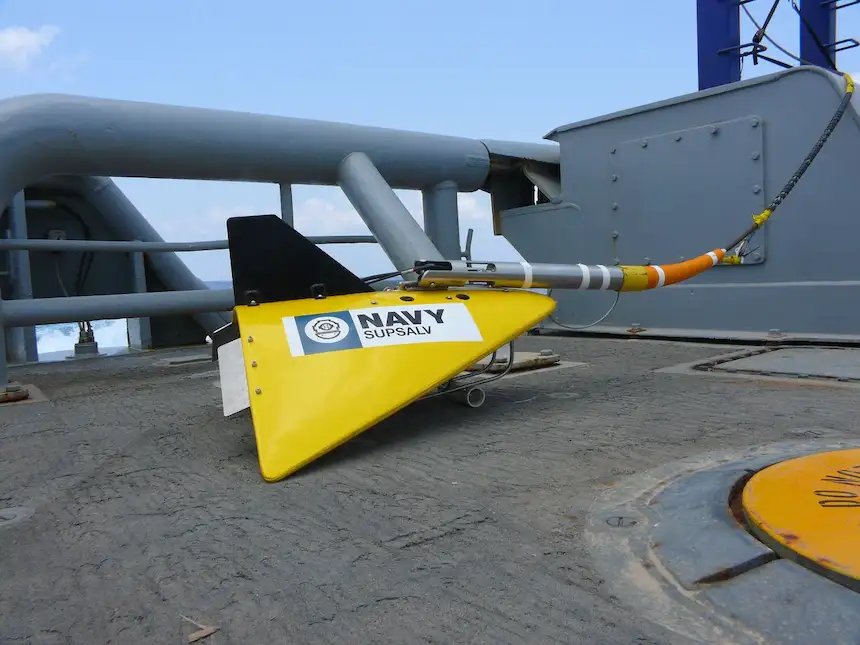While we can’t at this point confirm its authenticity, a video has emerged apparently showing the last moments of the British F-35B Lightning stealth jet that crashed while operating from the Royal Navy’s flagship, the aircraft carrier HMS Queen Elizabeth. The vessel was underway in the eastern Mediterranean earlier this month. The footage appears to be in line with previous unconfirmed reports that the pilot tried to abort the takeoff but ran out of deck and was forced to eject during the November 17 incident, which is still under investigation. You can read our original coverage of the accident here.
You can see the video embedded in the tweet below:
The brief video appears to have been captured using a mobile phone from accident footage that was being played back on a computer. A label at the top of the monitor reading Visual Surveillance System suggests this was part of the raw video from the carrier’s own closed-circuit TV system, which would be used in any accident investigation, as well as to monitor regular flight-deck activity. The footage shows the pilot ejecting just as the jet topples over the end of the ‘ski jump’ takeoff ramp, clearly short of power. The pilot’s parachute seems to become snagged on the bow of the carrier, another feature of previous unconfirmed reports.
Once again, we don’t have confirmation that this is a genuine video of the incident, but we can say, at least, that it reflects earlier accounts of what is claimed to have happened. According to a report in the Sun newspaper, the F-35B crashed due to an engine failure caused by the ingestion of a “cheap plastic rain cover.” This report suggested the item was likely an intake blocker that had been left on the jet, although it seems at least possible that it originated from another of the jets arranged on deck.
According to that same report, citing an unnamed source, sailors on board the carrier “knew almost right away” that something was wrong and subsequently “saw a red cover floating in the sea.”
Clearly, covers and engine blanks have to be removed before every flight and personnel will check thoroughly to ensure this is the case. It’s unclear what might have happened in this scenario, but it’s possible one of the covers had come undone and became lodged further down in one of the intakes, out of view of personnel.
It should also be remembered that the U.K. Ministry of Defense has not commented directly on the scenario as reported by the Sun, whose anonymous sources “blamed human error and oversight” for the mishap. The fact that F-35Bs continued operations from the carrier, with no apparent grounding order, suggests this may well have been the case.

So far, the U.K. Ministry of Defence has only confirmed the time and approximate location of the incident and the fact that the jet was lost during “routine flying operations,” with no other aircraft involved.
The Sun report mentions that the pilot involved was from the Royal Navy. The eight British F-35Bs embarked on the carrier were from the Royal Air Force’s No. 617 Squadron, the “Dambusters,” which is a joint force squadron with a mix of Royal Air Force and Royal Navy personnel. The unit had been embarked alongside 10 F-35Bs from the U.S. Marines Corps’ Marine Fighter Attack Squadron (VMFA) 211, the “Wake Island Avengers,” based at Marine Corps Air Station Yuma in Arizona, but these have subsequently departed the vessel as it approaches the end of its deployment.
Meanwhile, efforts are apparently still underway to recover the jet, which may well be almost completely intact, judging by the slow speed with which it entered the water.
Only hours after the incident, it was reported that the U.K. Ministry of Defence had approached the United States for assistance with salvage equipment located in Spain, closest to the scene of the incident.
As we reported previously, retrieving the Lightning from the seafloor will be a top priority, to ensure that neither the jet nor any of its sophisticated components end up in the hands of Russia, or potentially other powers.

Since then, a U.K. government spokesperson has confirmed to USNI News that the U.S. Navy is indeed part of the recovery, dispatching a ship and crew to assist in the “deep salvage mission.” The same report also states that Italy is helping, too.
Most important, of course, is the fact that the pilot survived the incident, the cause of which will surely be confirmed before too long by an official investigation. Whatever led to the loss of one of the U.K.’s precious stealth fighters — they have only taken delivery of two dozen — the accident certainly casts a shadow over what was otherwise a very successful maiden operational cruise for HMS Queen Elizabeth and its embarked air wing.
Contact the author: thomas@thedrive.com
